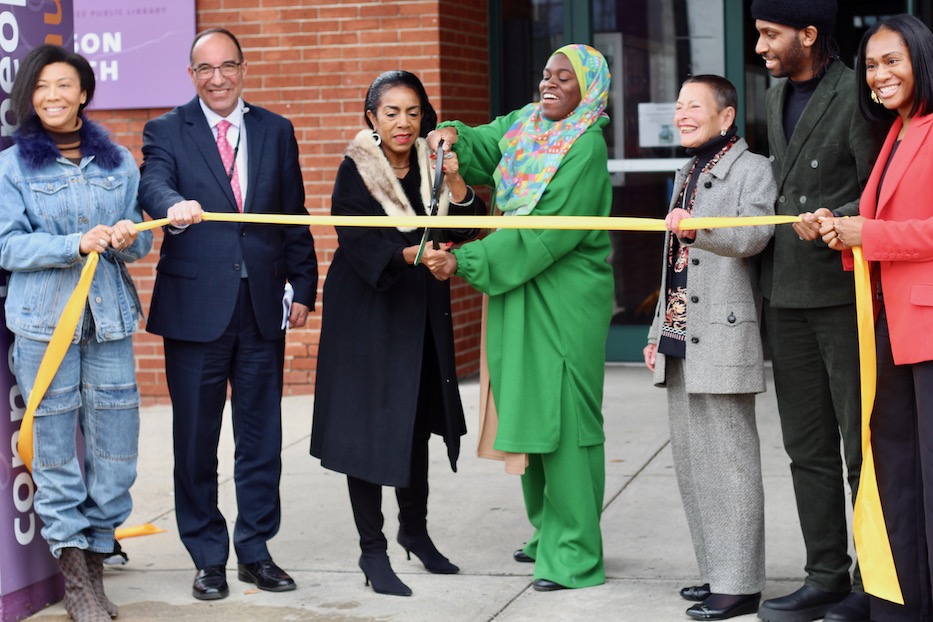
ConnCAT | Culture & Community | Dixwell | Arts & Culture | New Haven Free Public Library | ConnCORP | Arts & Anti-racism | Black Haven
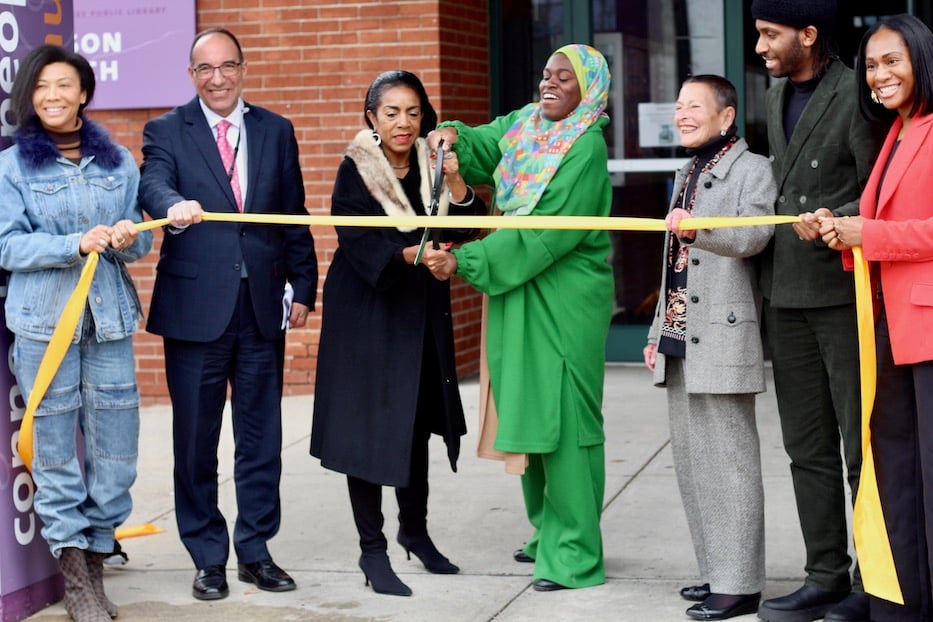
Cutting the ribbon on the celebration. From left to right: BLOOM Owner Alisha Crutchfield, City Economic Development Administrator Mike Piscitelli, Stetson Branch Manager Diane Brown, Black Haven Founder and Director Salwa Abdussabur, State Senior Development Specialist Lindy Lee Gold, Filmmaker and Musician Kolton Harris, and City Cultural Affairs Director Adriane Jefferson. Lucy Gellman Photos.
A three-day celebration of Black film, filmmakers, and creatives is helping Stetson Branch Library say goodbye to its rich Dixwell Plaza past—and hello to a bright and evolving future.
That celebration is Black Haven Independent Theater and Entertainment (BITE), a three-day pop-up, film series, storytelling event and community farewell at the old Stetson Branch Library at 200 Dixwell Ave. Thursday morning, members of Black Haven announced their plans for the festival, which will take place entirely inside the old building. Events run Thursday through Saturday afternoon; more on that below.
For many of the organizers involved, it is a chance to pay homage to a beloved neighborhood space, which was for years the de facto community center that Dixwell so deeply needed. Multiple times Thursday morning, speakers shouted out Stetson Branch Manager Diane Brown, who stepped into her role in 2006 and has transformed the library under her tenure. The branch now sits across the street at 197 Dixwell Ave., where it is an anchor of the Dixwell Community Q House.
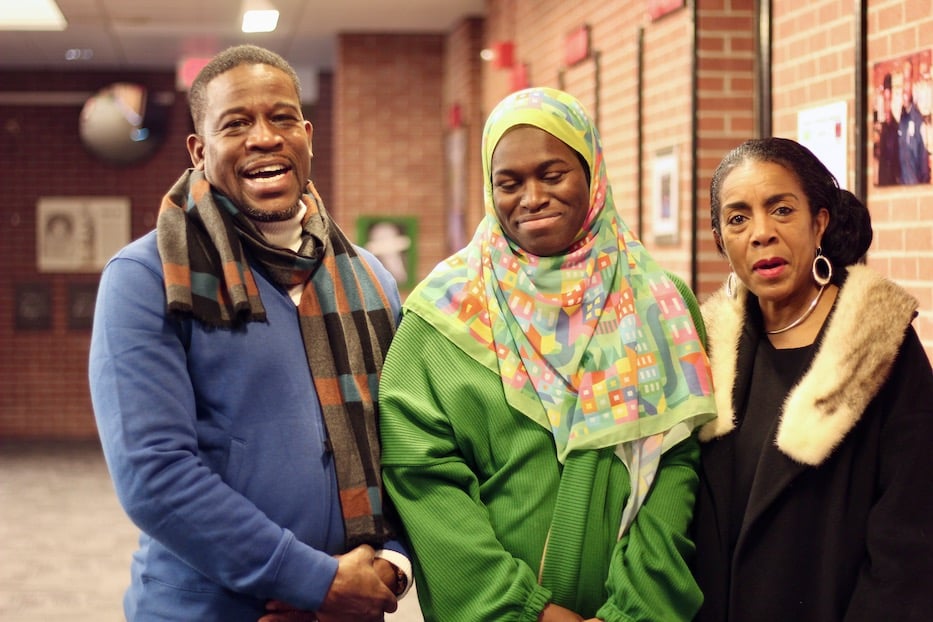
Shafiq Abdussabur, Salwa Abdussabur, and Diane Brown.
"Black Haven is dedicated to seeing Black creatives thrive and not survive in New Haven and Connecticut,” said Salwa Abdussabur, who founded Black Haven in 2020. “We want to see Black creatives have the equal opportunities, the breaking down of gatekeeping, and we want to see our visions continue to nurture our community. Art is the core of community wellness. It’s the core of community wellbeing.”
“The memories are beautiful and precious,” Brown said, a catch in her voice as she spoke. “It is here where I bonded with the village. It is here where I became a village mother, sister, grandmother, and auntie. In Black cultures throughout the world, that is an honor.”
The three-day pop-up begins Thursday afternoon with a screenwriting and directing workshop from musician and filmmaker Kolton Harris, followed by an evening of Black indie short films in which Harris is the featured filmmaker. On Friday, it continues with an “80s Movie Night,” featuring a screening of the 1985 film Krush Groove at 6 p.m. On Saturday, the BITE team will wind down with “Stetson Stories,” an afternoon of storytelling and story collection around the old Stetson Branch Library, from 1 to 4 p.m.
All events take place at the old branch building at 200 Dixwell Ave.
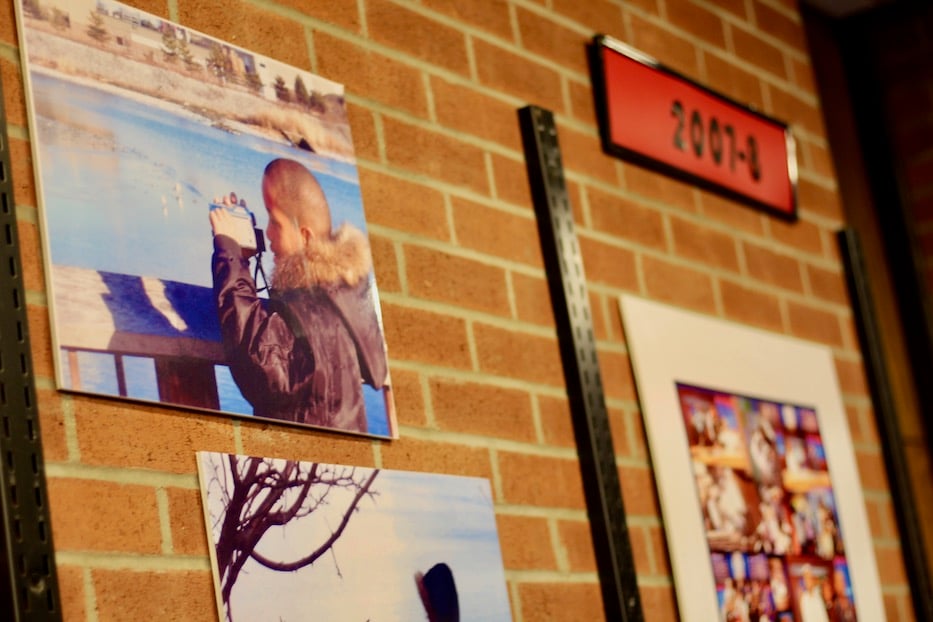
A gallery space in the old Stetson Branch building.
As it came together, BITE received support from the New Haven Department of Arts, Culture & Tourism, the Connecticut Center for Arts & Technology (ConnCAT) and its for-profit subsidiary Connecticut Community Outreach Revitalization Program (ConnCORP), the New Haven Free Public Library, (NHFPL) and the Westville-based small business BLOOM.
Around the now-empty building, BLOOM owner Alisha Crutchfield has created a cozy and reflective gallery space, filled with memories of Stetson’s rich and storied history and a nod to the plaza's coming future. Founded in a house on Division Street in 1917, Stetson stood at 200 Dixwell Ave. from 1968 to 2021. In 2017, the library announced that it would be moving across the street as an anchor of the Dixwell Community Q House, which it ultimately did last year. During the pandemic, it provided curbside pickup even as Brown and a skeleton staff weeded the collection before the move.
For Abdussabur, it’s a powerful chance to say goodbye to a building—and honor a community—that helped raise her. This year, ConnCORP will begin its demolition of Dixwell Plaza for its $220 million project ConnCAT Place, a mixed-use neighborhood hub with apartments, shops, cultural venues and a childcare center from the Fair Haven-based Friends Center for Children.
Abdussabur is excited for that future, she said—but still nostalgic for the past.
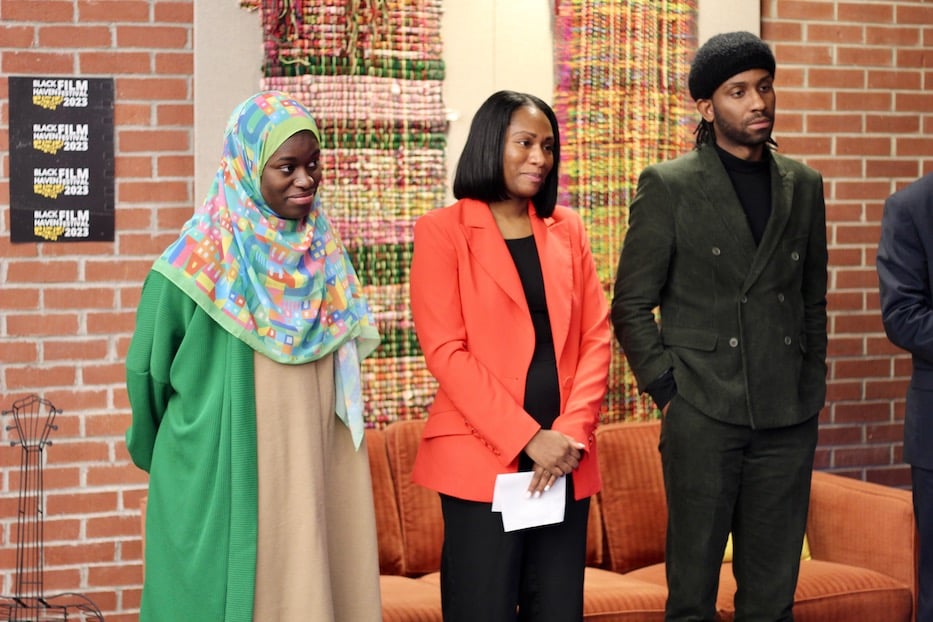
Salwa Abdussabur, Adriane Jefferson, and Kolton Harris.
Now in her 20s, she can remember bursting through Stetson’s Dixwell Plaza doors as a small kid, knowing there was always something to do within those walls. Sometimes, it was a visit from a T.V. producer, or an afternoon chess club, a pop-up skate clinic, or a summer program that materialized from seemingly no money. Sometimes, it was a mural that could take a mid-century commercial strip, and turn it into a citywide public art landmark.
It became a sanctuary for her and her brothers, and later an inspiration to follow in Brown’s footsteps. As Abdussabur got older, Brown watched her transform from “a bright eyed little girl” running around the branch to a thoughtful poet, musician, filmmaker and artist.
Thursday, Brown became emotional thinking of the number of children, families, and neighborhood partners she’s worked with in the building. She joked that she’ll miss even the sound of the tin roof, which rattled and banged in the wind as she spoke.
"The work of Diane Brown turning a library into a cultural center is revolutionary,” Abdussabur said. “It is a model for not only our city, our state, but for our country, that art and humanities is a tool for social change."
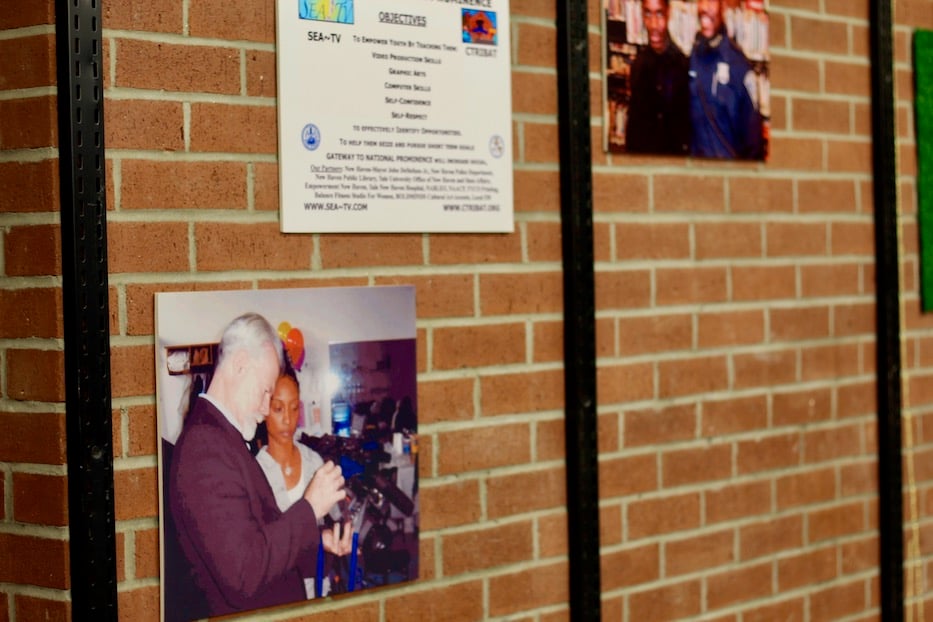
Stetson is still a part of that story. In 2020, Abdussabur’s desire to find and foster safe spaces for Black creatives led her to launch Black Haven as a virtual festival. After holding the first iteration online, Abdussabur and fellow artists brought Black Haven to the Dixwell Plaza parking lot in September 2021. She still seeks out Brown for counsel and advice; her family includes three generations of Stetson Branch patrons, from her father Shafiq to her young niece and nephew.
Thursday, she looked to the pop-up as a culturally appropriate sendoff to the space, in which Black creatives have been celebrated and amplified for years. Through her work, Brown has made Stetson into not just a community center, but also a haven for Black arts and literature. The new two-story library across the street includes thousands of books at all reading levels dedicated to the African Diaspora.
Harris, a program associate with the Connecticut Office of the Arts who first learned about Black Haven as a filmmaker, said he was thrilled to join the BITE team as a teaching artist. Born in Boston and raised in New London, Harris got to know New Haven as a kid, when his dad was working on New Haven Healthy Start with the Community Foundation for Greater New Haven.
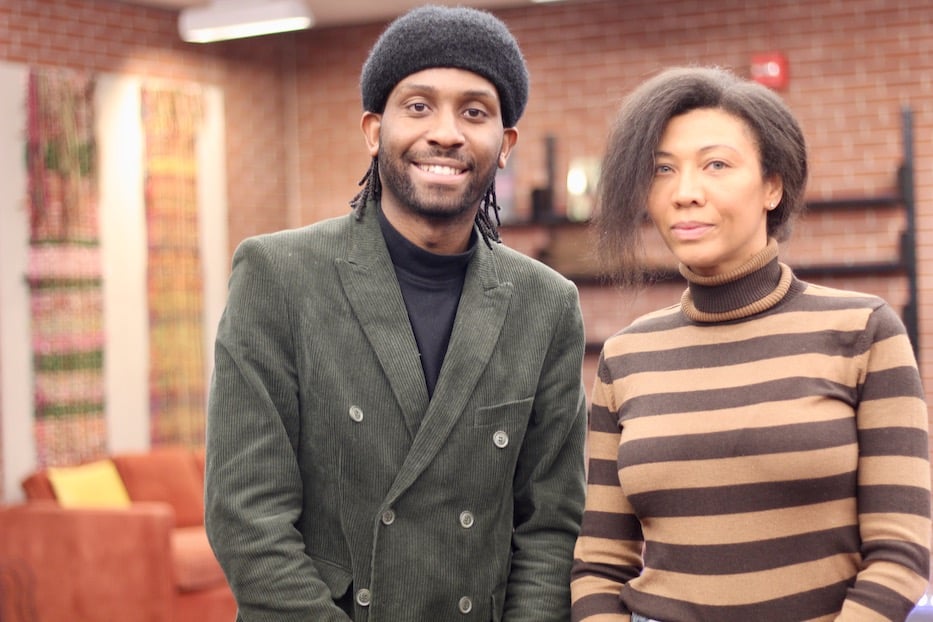
Harris and Crutchfield.
For years, he said, he heard about Abdussabur, who is around the same age. Then two years ago, he was sitting on a Zoom call for work when he noticed “this beam of light, so excited” to share ideas with the group. It was Abdussabur.
Since that first meeting, he has shown multiple short films with and through the organization’s festivals, including his musical film “Black Joy” and, last year, “Nightmare.”
“In an industry and culture that’s often relegated Black bodies to mere commodities and instruments, Black Haven has deemed Black bodies and Black voices to be creative engines for storytelling and empowering,” he said Thursday. “To have space for this incubator of talent and imagination can literally shift the trajectory of a generation. This moment represents the power of possibility and proclaims the hope of progress.”
City Cultural Affairs Director Adriane Jefferson noted that the pop-up also dovetails with New Haven’s Cultural Equity Plan, which city officials presented publicly a year ago this month. She stressed the power of saying "yes" to Black artists and creatives, who have not always had a seat at the municipal table. That’s especially true for Black women, who are often relegated to the margins twice over.
“I think this is a great example of what it looks like to do nontraditional spaces and to be creative,” she said, noting that artists have long stressed the need for physical space where they can gather. “This is something that’s moveable, right? So she [Abdussabur] can take this model and move it to different places in the community … I think this is an exact example of what cultural equity actually looks like.”
“I think that this is a model in how you govern,” she added. “Talking about the ways that you can make things work and not the opposite of shutting beautiful ideas down.”
“A Safe Space”
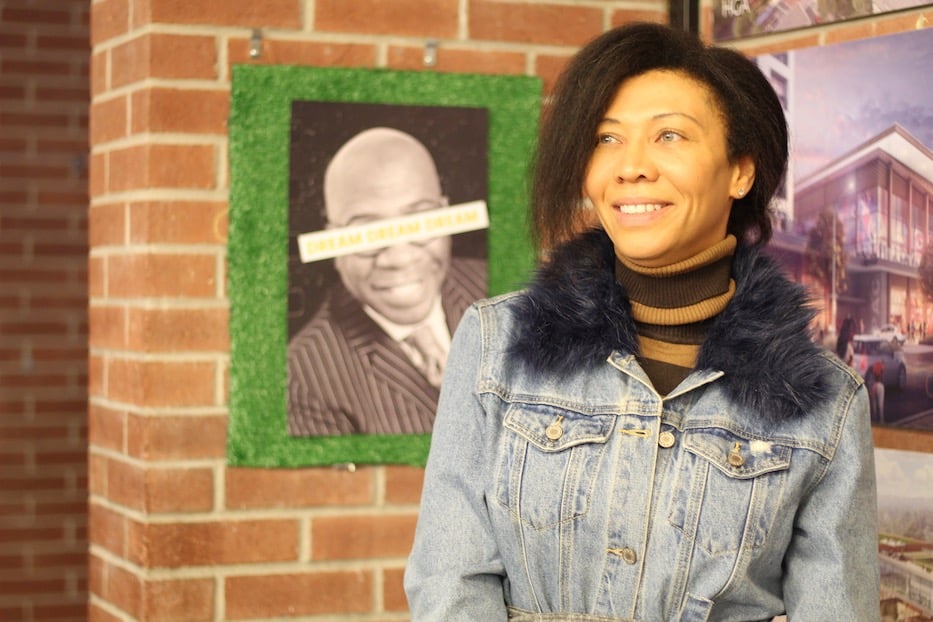
Alisha Crutchfield Thursday.
Thursday, a few attendees gave a preview of what Saturday’s story sharing might be like. Long before he was a dad, and long long before he was a grandfather, Shafiq Abdussabur was a kid who loved Stetson library more than anywhere else in his neighborhood.
Abdussabur, who grew up in the Florence Virtue Homes behind the library, can still remember coming into Stetson after school and during the summer months. “It was the only place we could walk right over,” he said. After entering through the back door—which always seemed to be open—he would sit and draw for hours, or occupy himself with books about planes and ships.
Just as it did for his children years later, it became his sanctuary. The library was where he learned to play chess and checkers, where he lost himself hundreds of times in the pages of books. The space also marked his first sustained interaction with police, when officer Joe Greene would come in to chat up with then-librarian Stephanie Boskey.
Their flirtation over the circulation desk led to their marriage—and to Abdussabur’s idea of bringing kids and officers together to talk, without an agenda in mind. Years later, when he joined the New Haven Police Department, Stetson was one of his first stops. While he left the department years ago, he still sees Stetson as a hub of social connection.
Thursday, he lingered at a timeline that Crutchfield had installed along one wall. Beneath the 2007-2008 mark, he stopped at a collage of kids in a T.V. studio, searching for his daughter and then-pint-sized sons until he found them. That year, he and Brown had worked with News 8 to get kids into the studio, then brought in a producer from Nickelodeon to give a class at the library.
He has dozens of stories like that, where the library jumped in to help. Along the wall, there were images of kids playing, bent over chess boards, their brows furrowed in concentration. A group of tiny musicians smiled for the camera alongside musician Chris "Big Dog Davis." In a photo from 2009, Brown spoke at a microphone as late City Librarian James Welbourne looked on, beaming. It was the installation of a mural that still sits outside, emblazoned with the letters R E A D.
“The library became a safe space where you could learn, where you could just get a different lens on things,” Abdussabur said.
Crutchfield, who often brings her young daughter to the new Stetson Branch across the street, said she’s honored to be working on the project with the BITE team. Salwa Abdussabur is a regular at BLOOM, and the two have found themselves talking about collaborating for some time.
Because she designs with the philosophy “bloom where you are planted,” Stetson made immediate sense to her, she said Thursday. Its roots are deep in the community. It has flourished on two sides of Dixwell Avenue, thanks in large part to Brown’s tender and constant care. And while one space will physically disappear, another is blossoming in its place.
“What a special place this is,” she said. She walked over to a section of the timeline set for the near future, the year 2025. In it, renderings of ConnCAT Place rose into the sky, surrounded by sun-soaked greenery. It looked like a new day.

